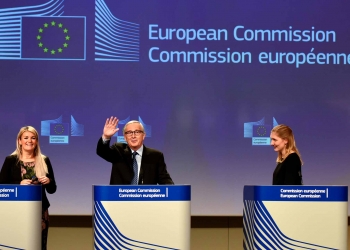In 2014, for the first time in the EU’s history, European voters had a say in who would be named Commission president, thanks to the Lead candidate process. With parliamentary elections approaching, let’s see how this system that designates lead candidate works.
The European Commission (EC) is an institution of the European Union, responsible for proposing legislation, implementing decisions, upholding the EU treaties and managing the day-to-day business of the EU. Commissioners swear an oath at the European Court of Justice in Luxembourg City, pledging to respect the treaties and to be completely independent in carrying out their duties during their mandate. Unlike in the Council of the European Union, where members are directly and indirectly elected, and the European Parliament, where members are directly elected, the Commissioners are appointed by the European Council and confirmed by the European Parliament.
The new procedure to appoint the President of the European Commission was introduced in 2014 with the aim of strengthening the democratic legitimacy of the EU. Proponents of the Spitzenkandidaten innovation hope that it will personalise the campaigns; instil a European dimension; and demonstrate a clear link between election results and the role of the President of the European Commission; with the ultimate aim of increasing turnout and strengthening the democratic mandate of the Commission.
While the Spitzenkandidaten process was still in its infancy in 2014, the elections in 2019 Commission’s Spitzenkandidat process is at risk.
EU Debates! You?
Your opinion counts!
Leave your comments below














